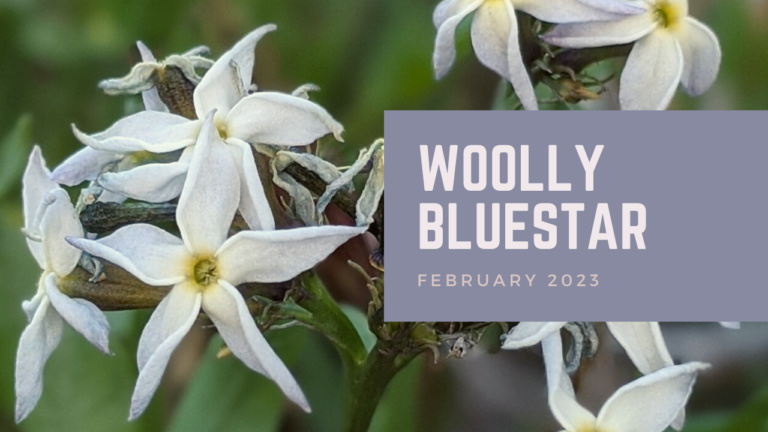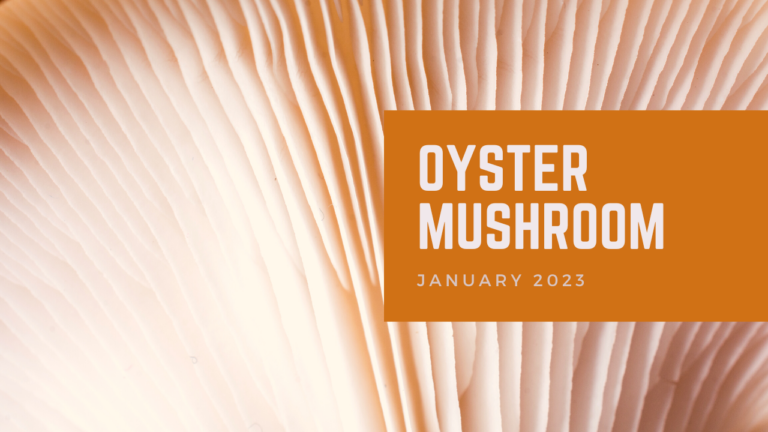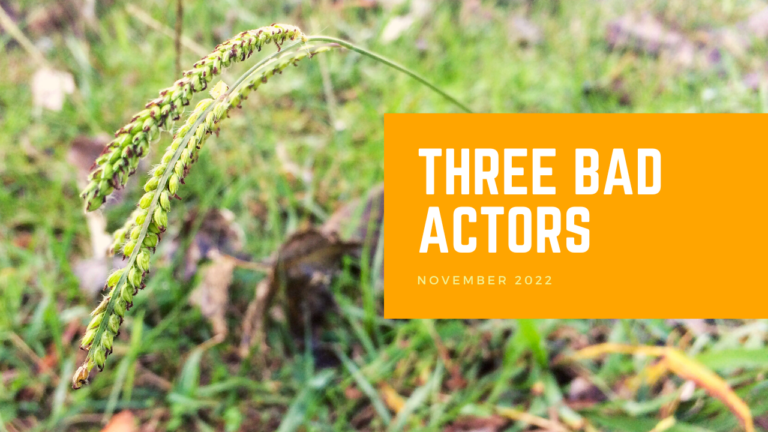Presented by Andy Sipocz
May 10, 2021
Botanical name: Sassafras albidum
Common names: Sassafras, Ague Tree, Cinnamon Wood, Mitten Tree, others
Family Lauraceae (Laurel)
[MUSIC—EASY AND FUN]
[ANDY] Okay. So, plant of the month is Sassafras. It’s a small tree, typically no more than 70 feet tall, about a foot in diameter although that’s a pretty huge one. It’s a fence row tree or found on the edge of the woods or along farm roads or forest roads. Typically, it’s no more than about 30 feet tall and six inches in diameter.
It’s got many common names. Ague Tree meaning agues like sickness; it used to be thought to cure just about everything. White Sassafras, Gumbo Filet, Cinnamon Wood, Mitten Tree, Saloop, don’t ask me where that came from, Smelling Stick because of the very unique odor that it has.
So how do you identify sassafras? It has mitten shaped leaves. Some are right thumb, some are left thumb, some have both thumbs on the same leaf, some have no thumbs whatsoever. The new twigs are green. Bark is very deeply furrowed for such a small tree. It has an orange cast, especially if you score the surface. The fruits start out as little green capsules. They turn red and then purple when they’re ripe. The flowers are small but they’re actually fairly conspicuous. They’re yellow or kind of a yellow green color. The branches of the tree, they all sweep up. The ends of the branches sweep up like a candelabra and of course it has a very unique odor. Here’s a close-up of that green twig I was telling you about and the bud. The bud is quite large. The stems, even the very young stems, are fairly thick. Fairly large in diameter and of course they have a very unique odor when scraped. Here’s a picture of the bark that has been scored–really beautiful orange color underneath. And then notice on the right how the tips of all the branches sweep upwards.
As I’ve said before, it likes the edges of woods. So if you’re going to plant it, it should be in full sun at least half of the day. It likes sandy soils, slightly acid soils, but it will grow even on limestone. And if you plant Sassafrass in your yard, and you notice that the leaves are not a very deep green, it’s probably a reaction to the pH. You can add sulfur to lower the pH or you can just simply add some fertilizer.
It is a disturbance species. So when found in nature, it typically grows in disturbed areas–areas where the forest has been knocked over by a windstorm or maybe burned up by a wildfire. It will form a thicket, although if you’re going to put in your yard, it’s really easy to control the root suckers. It’s not like some of the problems we have with live oaks. If you are going to grow it in your yard, especially in this area with gumbo clay soil, I recommend building a fairly substantial raised bed for it. And because it can do well with just half sun, putting it as a specimen tree on the side of the house is a really good alternative.
And I will say that this species is endangered by the ambrosia beetle on a fungus. Originally came from Asia. It’s not only affecting Sassafras, but it’s affecting everything in the Laurel family, including Redbay and even the non-native Camphor Tree. Some of the trees seem to be resistant to the fungus, so we don’t really know what the fate of Sassafras is going to be in our area. I’ve noted that in Village Creek State Park most of the Sassafras there have been killed, but some seem to show some resistance. We’ve lost a lot of trees in North America: American Elm, American Chestnut, Butternut, Eastern Hemlock is going quickly. Our ashes will soon be gone. If you go just north up into Arkansas you’ll notice about one-fifth of the trees in the forest that are dead. Those were formerly ash trees. I expect our ashes will be disappearing any year now, if not this year, due to the Emerald Ash Borer.
Some of the uses. Here’s a picture of the fall foliage. It really is a beautiful tree. Now, I’ve got one in my yard and I think because it’s isolated from other Sassafras or other laurels it’s doing just fine at this point. So I do encourage you to plant it in your yard, perhaps as a way to preserve this species.
Some of the uses. When you dry the leaves that’s filet, as in filet gumbo. You can buy that in a grocery store it’s the thickening compound used in gumbo. Sassafras used to be made into a tea. You take the inner bark of the roots (I’ve made it). It makes a beautiful red tea, kind of the same color as transmission fluid. It actually used to be the second most important export from the United States to Europe. Only tobacco was ahead of it. It was used as a cure-all. It contains an oil. Safrole oil, which was used as a flavoring for a lot of things. Safrole is the, I should say, sassafras is the flavoring, the main flavoring, in root beer. Since it was found that safrole oil contains a carcinogen it’s been taken out of most root beers; however, I am a root beer aficionado and I have found a few brands that still have, use genuine Sassafras in their root beer. They have actually the–what is the word–distill the safrole oil out. So it still tastes the same it’s just not going to give you cancer or liver disease. It is only one ammonia group away from the drug ecstasy. You can order safrole oil online but if you do order a good bit, expect to get a door knock from the drug enforcement agency. Seriously. It actually was used to make that drug. That drug’s been around for a long time and there’s actually a lot of interest now in reclassifying safrole so that it can be, or the compound ecstasy, so it can be used to treat PTSD and some other diseases.
The wood itself is very tough and flexible. As Hillary pointed out, it can be used to make bows. It also used to be used to make wheel bearings because it’s a very oily wood and so it would kind of grease itself. So those old wagons actually had bearings made out of Sassafras. Sled runners. Excellent sled runners, again because it has this natural oil in it and it’s flexible and very tough. It’s used in small boats because it’s also very rot resistant and it’s used to make decorative furniture panels.
It is the host plant for the Spicebush Swallowtail and the Promethea moth along with 36 other species of butterflies and moths.
It’s fairly easy to propagate from seed. Any Sassafras that gets a decent amount of sunlight is going to produce a lot of seed. So you can either plant the seeds in the fall and leave your pots outside for the winter or you can keep them in the refrigerator and plant them in the spring and they should pop right up.
That is all I’ve got.
[MEADE] Thank you very much, Andy. Are there any questions?
[GUEST] So would Andy give the brand or manufacturer names of the sodas that have the sassafras oil in it that he still drinks?
[ANDY] Hansen’s and Thomas Kemper are the only two I know. I went to, one of my best memories is going to the Utica Brewing Company in Utica, New York. We took a little ride on a boat down the Erie Canal. And then we all went to this brewery and the teachers got to have beer. And we had, this is fourth grade class, and we had root beer made with, brewed right there, with sassafras. It was delicious. And I’ve been searching and searching for an equivalent root beer but you know how things never taste the same as you get older. But I haven’t tried Hansen’s yet but I’m going to give it a try and we’ll see. Abita, I’ve got some Abita. I’ve tried Virgil’s and they just don’t measure up. So I’m really eager to try Hansen’s. And there’s actually a very active community on the internet that rates root beers, I’ve discovered.
All right, thank you.
[MUSIC—AND THAT’S IT]
Related Posts

Plant of the Month: Woolly Bluestar
Our Plant of the Month for February 2023 is Amsonia tomentosa, commonly known as Woolly Bluestar, Woolly Amsonia, Small Leaved Amsonia, or Gray Amsonia.

Plant of the Month: Oyster Mushroom
Our plant of the month for January isn’t a plant at all, it’s a fungus!
Botanical name: Pleurotus ostreatus
Common name(s): Oyster Mushroom, Pearl Oyster Mushroom

Spotlight on Invasives: Three Bad Actors
Spotlight on Invasives: Johnsongrass (Sorghum halepense), Southern Crabgrass (Digitaria ciliaris), and Dallisgrass (Paspalum dilatatum)


